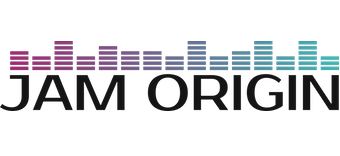MIDI Guitar 3.0.63 Beta (Window, Mac and iOS):
First a disclaimer: Many great ideas and fixes were proposed here in the forum and on emails, which I wasn’t able to make into this round. Please bear with me. I haven’t forgotten and will get to that now.
This update is mainly about CPU optimisations in the tracking modules. It’s something that was calling for attention and that will benefit most users. It’s also an investigation into unifying audio and midi behaviours, so that modules will work the same way, regardless of whether they process audio or midi data.
It’s also the first release that I have been able to build simultaneously across Mac, PC and iOS.
Tracking modules, CPU optimisations:
-
Many small CPU optimisations, for different CPUs and trackers used. Most optimisations are for Apple Silicon and non-hex trackers. A few data points (standalone app, clear patch, expressive polyphonic tracking, 128 buffer size):
Mac Mini M4 base model: 50% CPU reduction. (22% => 10% in Activity Monitor) Macbook Pro M1 Pro: 60% CPU reduction. (50% => 15% in Activity monitor). Windows, AMD 7845HS: ~35% CPU reduction. iPad Pro 2020: ~40% CPU reduction. -
Tracking output should be 100% identical to previous versions.
-
MG3’s own CPU meter is more useful now. Since its not possible to measure the actual usage, the meter is showing a kind of upper bound how how much it could be using, if it was limited to a single core (it isn’t). No need to worry unless it goes red.
-
The multi-threading option, has been removed, as it’s now automatically managed.
iOS MIDI Bass/Cello/Violin! (pending Apple reviews)
- Now has all trackers onboard, including MIDI Bass, MIDI Cello and HEX and it should all run more efficiently (as pr above).
- I haven’t found out whether it’s even possible to run a hexaphonic device or 6 channel mixer on iOS in its current form.
Pitch modules (Transpose, Whammy, Vibrato, String Retuning, Chord Shifter):
- All pitch modules (except Retuning) now works also in the audio domain! The pitch shifting audio quality and latency (tradeoff) should be close to the best commercial pitch shifters.
- So, if you put a whammy in a guitar chain, you have a whammy guitar pedal. If you put a synth in the chain, you have a whammy synth. This makes it easy to mix and match synth and guitar behaviours.
- Furthermore, all pitch modules are all unified. This means you can freely cascade any number of different pitch modules and behind the scenes it will always process a single accumulated pitch shift pr string. This is good for audio quality, latency and CPU performance.
- If a jack input is used a general polyphonic pitch shifter is used behind the scenes. For hex signals, six very low latency mono pitch shifters are used.
- Pitch range limitation: total cascaded pitch range of -24…+24 for hex, -12…+12 for jack.
New Chord Shifter module
- Smooth 3-way morphing among 3 user-defined chords.
- Can mute (fade out/fade in) individual notes of those chords.
- Works in both audio and midi domains, but only with HEX.
VST/AU synth modules
- Synths have a 5th MPE dimention knob “Release”. This will determine the note release/lift-off behaviour in synths.
- When set to multichannel MIDI, CC controls will be sent to each note channel, rather than channel 1.
- Fixed bug causing mono processing instead of stereo.
MIDI Output module:
- Will keep a single global virtual midi device open during the lifetime of the MG plugin. This makes it easier to switch MG patches inside DAWs.
- Allow sending out midi directly to track from the AU plugin, even though most DAWs don’t support it.
Patch Bay module:
- New option “MIDI control from DAW” will take CC input from the DAW.
- Conversely, “No MIDI controller” and “Any MIDI controller” will not take CC inputs from the DAW.
- Separate saved controller settings from plugin and standalone versions.
Mute Open Strings module:
- Also works in audio domain.
High samplerates (96Hkz and 88.2Khz) now supported.
- In case your DAW work rely on high sampling rates.
- This has no quality benefits as for MG concerned.
Dedicated audio input device:
- This is an odd feature. It’s now possible to use a dedicated audio interface for guitar inputs (and another for outputs), even in the MG3 VST plugin, running inside a DAW. This shortcut the DAW audio routing and may reduce latency a tiny bit, but it also allows painless hex pickup setups and avoids complex 6 channel routing in the DAW.
- Its highly unusual for a plugin open an audio device directly, and not supported in all DAWs (Logic, MainStage, Garageband, doesnt allow it right now, but we may have a workaround in the future).
- On MacOS, previously it was a latency hit by using two different interfaces. Now it’s a tiny latency gain.
- On Windows it might now be possible to combine two ASIO drivers without installing any 3rd party aggregate drivers (that sometimes will mess up the system).
- The audio devices “more options” window has been removed.
UI:
- Right click on selectors will nudge it the other way around.
- Fixed bug that could sometimes cause graphics garbage or a black window.
Download:
- Get it here. (You must be logged into the forum).
